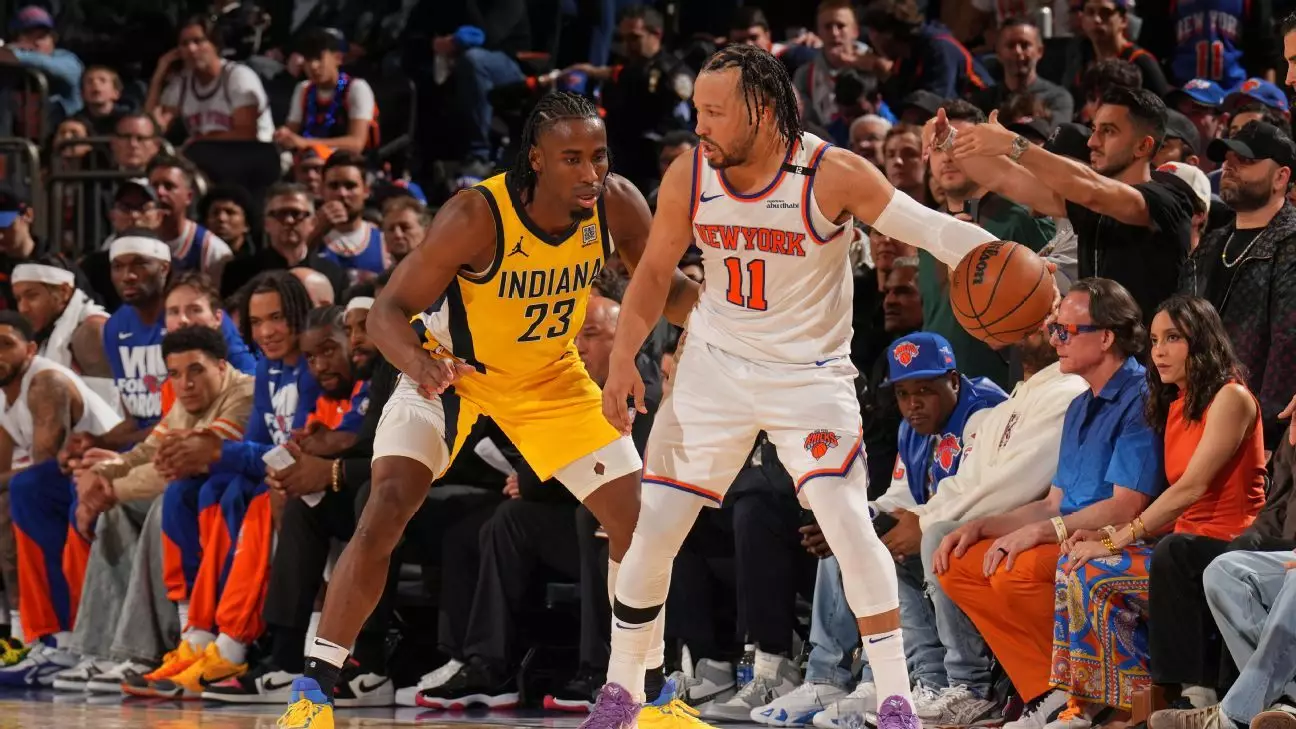The 2025 Eastern Conference finals isn’t just another matchup on the NBA calendar; it’s a vivid revival of a rivalry that has deep roots stretching back to the 1990s. The stakes are high as the New York Knicks and Indiana Pacers meet again in a collision of basketball eras, charged with the kind of palpable tension that often transcends the court. Historically, the two franchises have a storied past, clashing eight times in the playoffs, with memorable face-offs occurring primarily during the anti-hero era of the game. For many fans, the ghost of the 2000 finals looms large, with the Knicks’ heartbreaking loss adding layers to their longing for redemption against the same foe that beat them in the decisive series.
The fierce rivalry was catalyzed in the early years of the 90s, culminating in legendary playoff incidents such as Reggie Miller’s iconic choking gesture directed at Knicks superfan Spike Lee during the dramatic Game 5 of the 1994 Eastern Conference finals. This pointed celebration remains etched in basketball folklore, epitomizing not just Miller’s genius but also the steely determination that characterized those confrontations.
A New Era with Old Flames
Fast forward to 2025, and the modern iteration of this heated rivalry is ablaze with both nostalgia and fresh animosity. Tyrese Haliburton, the current face of the Pacers, paid homage to Miller’s legend by mimicking the famous choke gesture after hitting a clutch game-tying shot in Game 1 of the series this season. The twist? Haliburton pointed directly to Miller, who was commentating on the game—a meta-commentary bringing past and present together, showcasing the enduring impact of the rivalry on new generations of players.
Such theatrical moments are no longer just relics of the past; they shape the ongoing narrative and emotion of the series, breathing new life into a rivalry that many thought was confined to history. As both teams continue to face off, each game feeds the anticipation, and every basket fuels the fire, establishing a new chapter marked by grittiness and flair.
Building Momentum Through Personal Narrative
Last year, the Knicks and Pacers met in the Eastern Conference semifinals, a series that culminated in a decisive Game 7 at the iconic Madison Square Garden, where the Pacers showcased an astounding 67% shooting from the field. Haliburton stood out, leading the charge with his impressive stats, and sealing a victory that was not merely a win but a proclamation of their intent to dominate in the present day. However, his victory lap was marked by a bold fashion statement—a hoodie emblazoned with Miller’s choking symbol, which he downplayed as merely a “comfortable outfit.” Haliburton’s casual dismissal eerily underplays the significance of such gestures in sports; they become symbolic, a narrative that fans relish and dissect.
The intertwined destinies of players like Haliburton and the Knicks’ Josh Hart enrich the story. After last season’s exit in the conference finals, Hart’s tongue-in-cheek commentary on Haliburton’s fashion choices only exacerbated the competitive edge. As these players navigate through their careers, their trajectories and personal connections weave a rich fabric of rivalry deeply rooted in more than just wins and losses.
Beyond the Court: The Entertainment Factor
The rivalry isn’t limited to the hardwood; it spills into popular culture, demonstrating the broad appeal of today’s players beyond traditional basketball fans. Last June, in a striking crossover moment, Haliburton was spotted engaging with WWE superstar Logan Paul, signaling the fluidity between sports and entertainment. Their involvement in the entertainment realm highlights an important trend—the blending of athletic talent with cultural influence. During an electrifying SmackDown event at Madison Square Garden, Haliburton locked eyes with Knicks’ Jalen Brunson, igniting not just fan interest but perhaps a playful public challenge that mirrors their on-court encounters.
This dynamic showcases the evolution of rivalries in modern sports, where engagement extends beyond traditional boundaries, emphasizing connection, personal branding, and entertainment. It’s a testament to how today’s athletes are not just players—they’re societal figures, shaping narratives and inviting fans into deeper, richer experiences.

